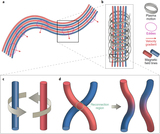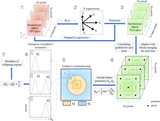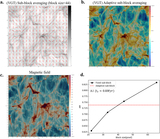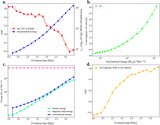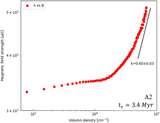Image Details
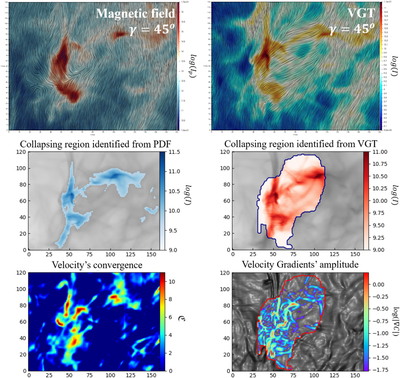
Caption: Figure A2.
Example of how the VGT identifies collapsing regions from the double-peak algorithm, when the mean magnetic field is 45° inclined to the line of sight. We use simulation A3 with tr ≃ 1.0 Myr and length scale ≃1.96 pc. Top right: magnetic field morphology inferred from VGT. Magnetic field is superimposed on the projected intensity map and visualized using the LIC. Here, γ is the relative angle between the mean magnetic field and the LOS. Top left: magnetic field morphology inferred from synthetic polarization, which is superimposed on the polarized intensity map. Middle left: gravitationally collapsing regions (blue regions) identified from the N-PDFs. Middle right: collapsing regions identified by the double-peak algorithm velocity gradients with a second block size of 30. Bottom left: projected velocity convergence. Bottom right: areas (red contour) of the velocity gradient’s amplitude corresponding to the collapsing regions identified by the double-peak algorithm. In the same regions, we mask the low-amplitude pixel, i.e., its corresponding amplitude is less than the global mean value.
Copyright and Terms & Conditions
© 2020. The American Astronomical Society. All rights reserved.


